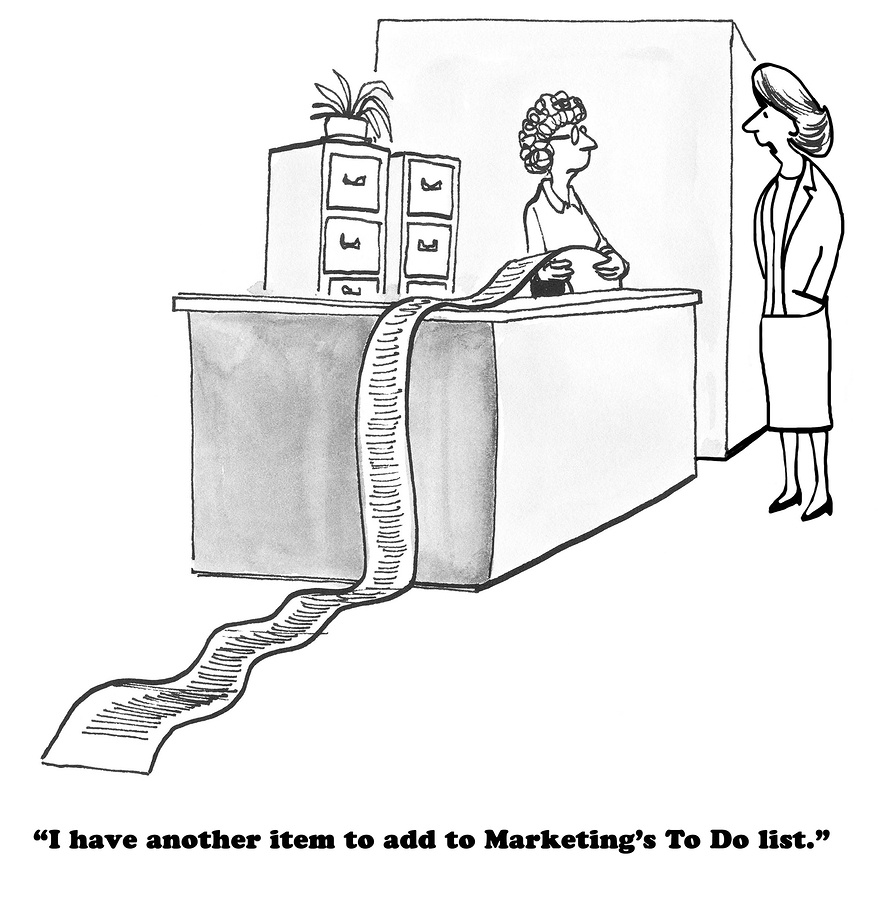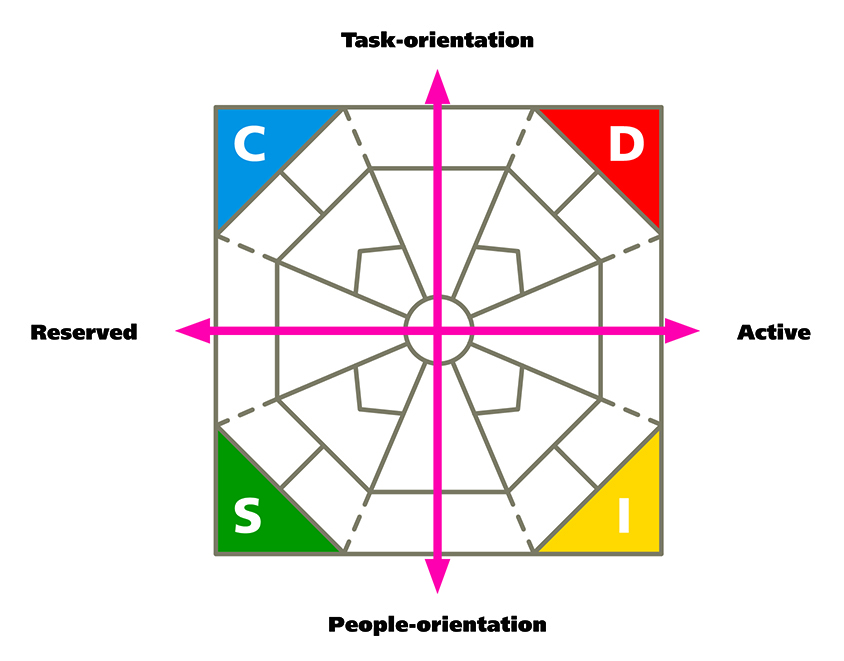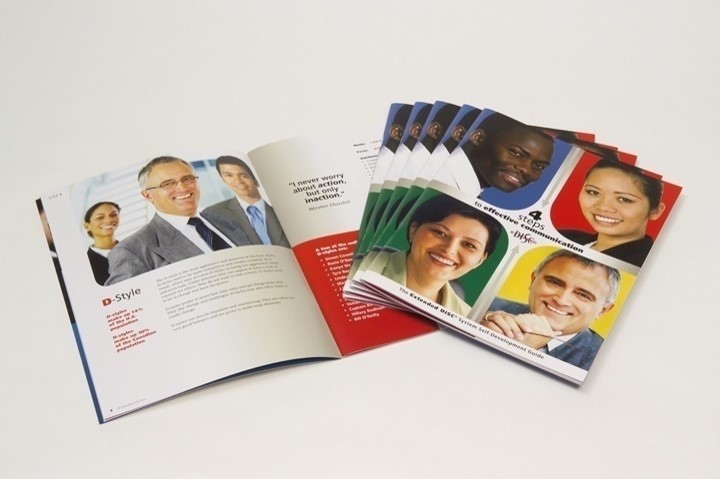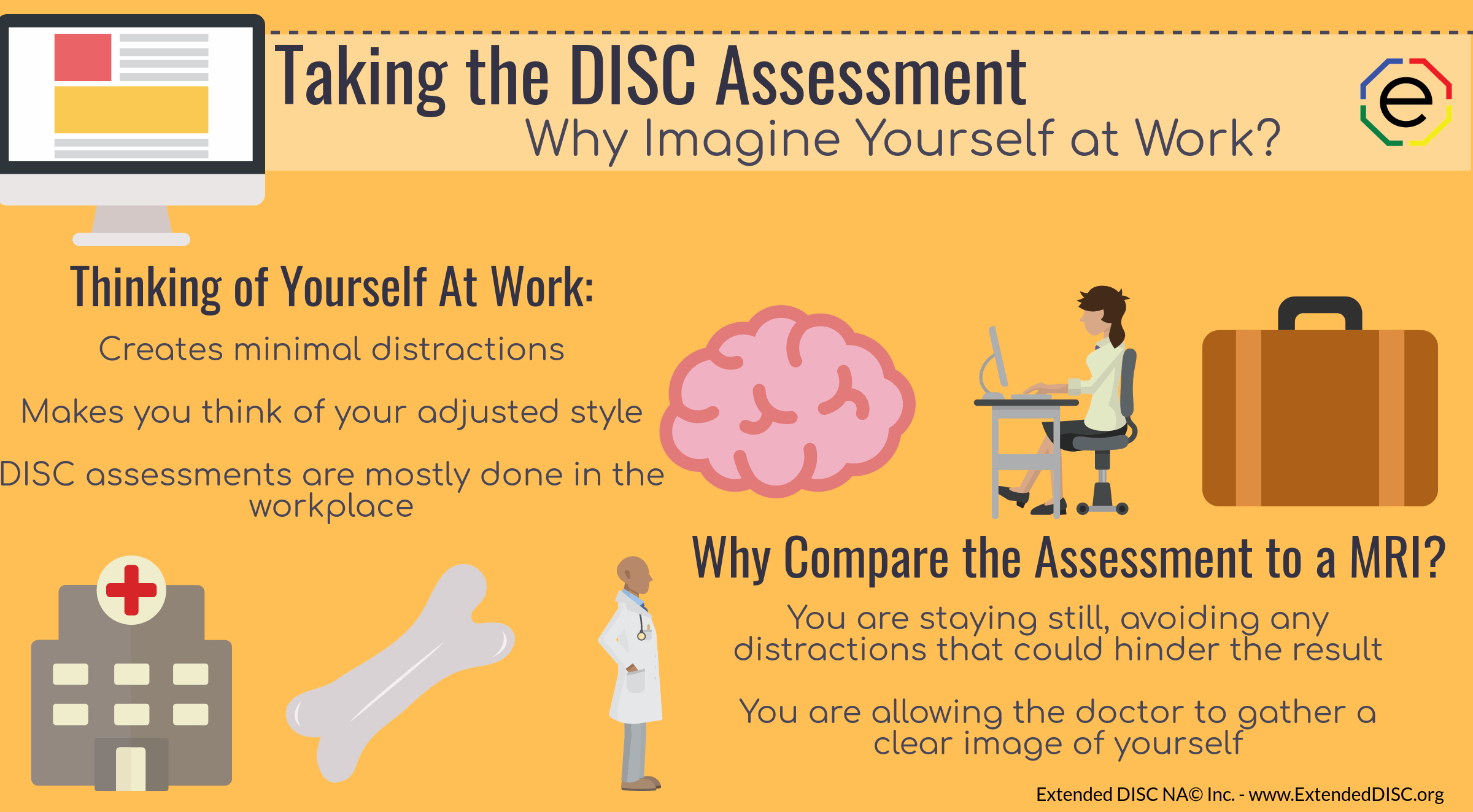People may assume DISC only applies to face-to-face interactions. However, that would exclude using DISC in written communications and phone interactions. Luckily, it’s not true! DISC communication goes beyond face-to-face interaction.
Mastering DISC communication starts with a few basic steps. The key to DISC self-awareness and identifying DISC styles of others is to practice. Once you start using DISC to improve how you communicate, you can apply it to all of your interactions including face-to-face, emails, phone calls, etc.
Identifying DISC Profiles in Written Communication
We all need to know basic email writing skills, but DISC can take us one step further. In written communication, the tone comes from what the recipient reads into the words and sentences you use. In the business environment, adjusting the tone of the email is especially important since it can make the difference between a successful business outcome or not. First, if you don’t know the other person, you need to identify their DISC style through their writing. Once you do, you can make appropriate adjustments to your own writing style to create a more engaging and successful exchange.
Identifying DISC Communication Styles in Emails: D Profile
D-style emails are typically blunt and brief since they prefer moving quickly and getting tasks done. Details will be minimal and focused. You might even find the message content is fully contained in the subject line. Email greetings may start with “All,” or no greeting at all. Also, emails may lack punctuation, capitalization, or correct grammar. D-styles use command sentences telling you to do something over asking you to do something.
D-styles and C-styles will prefer a task-oriented written communication style. However, the D-style will prefer to focus on key, targeted information. In other words, brief, executive summaries and bulleted highlights work best. They also prefer an action-oriented tone which can produce results. Hence, focus on emails with a call to action or with next steps that allow them to control what comes next. In summary, keep it simple, stick to the task, let them decide whenever possible, and you will use written communication to your advantage with the D-style.
Identifying DISC Communication Styles in Emails: I Profile

I-styles may get your email and see it as a chance to call you to chat. Greetings often end with an exclamation point, “Hi! I just got your email!” If the I-style does email back, it is often one long run on sentence and jumping from subject to subject. Emails tend to be colorful and conversational to an extreme. They come across as optimistic, breezy and focused on people and emotions. The email may lack data and hard facts. In addition, punctuation and details tend to get overlooked.
When emailing an I-style, try to focus more on the person and feelings. Focus more on the positive and avoid unpleasant subjects. Avoid the overuse of data and details. Also, consider picking up the phone instead of sending an email whenever possible, especially if they don’t respond in a timely manner. The I-style may lose track of following up. More importantly, they will see it as an opportunity to talk and socialize! In the end, you are more likely to get the results you are looking for.
Identifying DISC Communication Styles in Emails: S Profile
S-styles are amiable, but more reserved than the I-styles. Their written communication is often understated, but friendly. Emails may start with “I hope this finds you well” or similar. The emails are fairly long in order to convey the message clearly and completely. S-styles may end with “sincerely”, “all the best”, “best wishes” or whatever is widely used in the field/industry. They may pepper the email with lots of questions and inquire about details. They tend to use the pronouns “we” or “us” over “I” and “me”. S-styles prefer to focus on cooperation, so they will tend to use sentences asking you to do something over telling you to do something.
S-styles need to have enough information to make the best decision for themselves and the people around them. Answer their questions carefully and progress step-by-step. Focus on the specific benefits of making changes and how it impacts them. Provide reassurance whenever possible. Use plural form when addressing them, “you and your team”. Do not pressure them into making decisions with hard deadlines they have not previously agreed to. Also, be sincere and if possible, build trust and a relationship. Follow up and do what you say you are going to do.
Identifying DISC Communication Styles in Emails: C Profile

C-style written communication may be so long you will have to scroll down to find the end. The emails will have a lot of detail and facts. The tone will be more formal, fairly cool, less personal, and somewhat complex. You probably will note it has been spell checked and free of grammatical errors. In areas they are knowledgeable, they may come across as nit picky or critical. They will ask a lot of detailed questions and may not express opinions or focus on the big picture. Often times they will not be able to progress further until they have all the information they need.
Overall, C-styles are naturally more reserved and therefore, prefer written over face-to-face communication. C-styles, like D-styles, prefer a task-oriented writing style, but C-styles want detailed information. They want the details and facts, which will allow them to respond correctly or make the correct decision. The emails should be written succinctly and clearly. Whenever possible, the emails should preemptively answer any questions a reader might have. For example, a frequently asked questions section about the content can help clarify the information. Lastly, make sure to proofread and fact-check!
DISC Communication Styles Via the Phone
Identifying DISC styles via the phone is part science, part art, and all practice. You and the person you’re calling will form opinions based primarily on the words used, like in a greeting, and the tone of voice. You can do it quickly with practice. Just like written communication skills, effective phone skills can also be enhanced by understanding DISC. We are often told to be friendly, listen actively, and be courteous, but that may not be enough. We are assuming that the person on the other end of the phone wants the same thing. There are basic tips for better telephone meetings, but identifying DISC styles in others can give you a competitive edge.
DISC Communication Styles Via the Phone: D-styles

For the D-style, you might hear the greeting, “you know what to do!” and boom! You immediately need to leave your message. Voicemails from D-styles are usually very short, action oriented, and to the point. They will speak quickly and assertively, “This is John. Call me”.
If the person on the phone speaks assertively and quickly then you’re likely speaking to a D-style. Remember to get to the point, avoid details, and state the specific purpose of the phone call. Don’t over personalize the call and become too chatty. Recognize that they may be multi-tasking so get your point across quickly. You may not be used to the overbearing, aggressive and blunt tone, but stay focused on tasks and results. Ultimatums and lack of control in the conversation may quickly end the phone call and your chance for a successful call.
DISC Communication Styles Via the Phone: I-styles
You might hear I-style’s greeting as, “So sorry, you missed me! Have a great day! Cheers!!” When leaving messages, the I-styles are often cheery, funny, and animated. The phone messages may be fairly long and run on at a rapid tempo. You may end up not being clear what the reason for the call was. Messages may include phrases “well, anyway…” or similar. They may forget details like leaving a call back number.
Be prepared to add extra time to chat on a phone call with an I-style. For I-styles, it’s best to let them speak and listen more and enthusiastically when possible. Be friendly! When speaking, avoid too many details and focus on the positive effects of the interaction.
DISC Communication Styles Via the Phone: S-styles

A sample S-style greeting may say, “I am so sorry I missed your call. However. I do check my messages regularly and I will return your call as soon as possible. If you need assistance now, please hit “0” and my associate will gladly help you. Or, you can call me on my cell phone. Again, sorry to miss your call”. Voicemails from the S-styles are typically amiable, lengthier, and slower tempo. You may hear the phrase, “sorry to bother you” and hear the message conclude with, “I look forward to your call. Thank you”.
S-styles need enough time to process information before making decisions. Initially, you may be doing more of the talking while they are actively listening. Build trust and rapport. Be sure that they have been able to think through a thorough response—and have time to respond. The response may be simply to let you know they heard what you said and not necessarily an agreement of your question or proposal. You need to provide context and rationale and it’s best to bring them up to speed on the who, what, where, when, and why up front. Try ending the call with a date for a follow up call.
DISC Communication Styles Via the Phone: C-styles
The common C-style greeting may be, “You have reached my voicemail. Please speak slowly and clearly. Leave your number, the time you called and the reason for your call. Please leave a good time to call you back”. The C-style will be more formal. They will speak in a softer and even keeled voice with a slower tempo. Often, phone messages will include lots of detail about the reason for the call. Also, they may their leave call back number twice. They may even follow up with a detailed email to make sure you have all the information.
If you have a phone conversation with a C-style, then you may be doing more of the talking. Make sure to answer questions slowly and with details. Periodically, check for understanding. If possible, send them an email prior to the phone call to let them know the context of the call. The more information the better. Do not pressure for an immediate decision. You may need to make multiple calls or follow up with additional information via email.
Additional Tips for DISC Communication Beyond Face-to-Face

There is no one-way of successfully communicating with another person. However, any additional information you can acquire about the person, can help improve your interaction. In addition, it can save you frustration, time, and energy on both sides.
As with any mastery of DISC, you need to practice. Adjusting styles when writing emails and making phone calls appears to be extra work, but the payoff may actually end up with less work on your part. But, with the number of phone calls and emails we all get every day, people really will notice the difference when a good email or engaging phone call comes through. Your mastery of DISC could be the difference between getting overlooked and getting what you want.
Tip: Practice creating email templates based on each of the DISC styles.
Bonus tip: If you have a customer relationship management program (CRM) consider adding a field for your client’s DISC style. That way, you and your co-workers will have valuable shared information to create more impactful interactions.
Save
 Small amounts of stress can be good for us and help motivate us to achieve our goals. Yet, too much stress can impact our health, job performance, and overall happiness. We live in a fast-paced society, with many people interactions and lots of demands. While we may not feel stressed all the time, every one of us find ourselves in situations that cause us to feel stressed. When we are pressured or stressed we simply don’t have the same energy and focus to modify our styles; therefore, we become more of who we are naturally. Regardless of our style, we all feel stress at one point or another. But what causes our stress? How do we show and respond to stress? For each of us that will be different.
Small amounts of stress can be good for us and help motivate us to achieve our goals. Yet, too much stress can impact our health, job performance, and overall happiness. We live in a fast-paced society, with many people interactions and lots of demands. While we may not feel stressed all the time, every one of us find ourselves in situations that cause us to feel stressed. When we are pressured or stressed we simply don’t have the same energy and focus to modify our styles; therefore, we become more of who we are naturally. Regardless of our style, we all feel stress at one point or another. But what causes our stress? How do we show and respond to stress? For each of us that will be different.

 S-styles are emotional and people-focused; but they do not tend to display their emotions outwardly. When they encounter unexpected changes and unstructured situations, they may feel stressed. Although, it may not be readily apparent, unless you look for the signs. When S-styles feel pressure they can become overly cautious and try to keep the status quo. They may also become withdrawn and hidden. They may resist everything and be stubborn.
S-styles are emotional and people-focused; but they do not tend to display their emotions outwardly. When they encounter unexpected changes and unstructured situations, they may feel stressed. Although, it may not be readily apparent, unless you look for the signs. When S-styles feel pressure they can become overly cautious and try to keep the status quo. They may also become withdrawn and hidden. They may resist everything and be stubborn. The cause of stress for C-Styles can occur when they don’t feel they have enough information or they are unclear about their roles. They prefer to avoid conflicts, chaos, and uncertainty. Signs of stress in a C-style include questioning everything, fearing the worse or becoming withdrawn and distant. They will refute anything that is not logical and refuse to move in any direction unless they feel everything is perfect.
The cause of stress for C-Styles can occur when they don’t feel they have enough information or they are unclear about their roles. They prefer to avoid conflicts, chaos, and uncertainty. Signs of stress in a C-style include questioning everything, fearing the worse or becoming withdrawn and distant. They will refute anything that is not logical and refuse to move in any direction unless they feel everything is perfect. Remember, not everyone deals with stress the same way. D-Styles and I-Styles may be overt and vocal when they are stressed. However, S-Styles and C-Styles are likely to shut down or become invisible; making it difficult to recognize when they are feeling stressed. The DISC tool provides a road map to understand how we naturally prefer to do things, including how we react and how we best manage stress.
Remember, not everyone deals with stress the same way. D-Styles and I-Styles may be overt and vocal when they are stressed. However, S-Styles and C-Styles are likely to shut down or become invisible; making it difficult to recognize when they are feeling stressed. The DISC tool provides a road map to understand how we naturally prefer to do things, including how we react and how we best manage stress. In these situations you probably feel there is something you could do, but are not quite sure what that is. You know your end goal – your destination – but are not sure how to get there. It is like being lost without a map. Your Extended DISC® Assessment report and support materials will provide a map to more successful interactions with others.
In these situations you probably feel there is something you could do, but are not quite sure what that is. You know your end goal – your destination – but are not sure how to get there. It is like being lost without a map. Your Extended DISC® Assessment report and support materials will provide a map to more successful interactions with others.


 You know the strength of DISC in improving communication. You may also know how to deliver DISC, but how do you promote and sell Extended DISC® tools? Are you working for a training company or are you an independent consultant looking to enhance your business? Perhaps you’re an internal trainer looking to use the DISC tool to help your employees succeed. Whatever the reason, we can all use tips on how to effectively promote and sell Extended DISC®.
You know the strength of DISC in improving communication. You may also know how to deliver DISC, but how do you promote and sell Extended DISC® tools? Are you working for a training company or are you an independent consultant looking to enhance your business? Perhaps you’re an internal trainer looking to use the DISC tool to help your employees succeed. Whatever the reason, we can all use tips on how to effectively promote and sell Extended DISC®.










